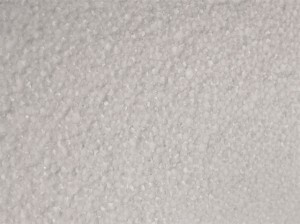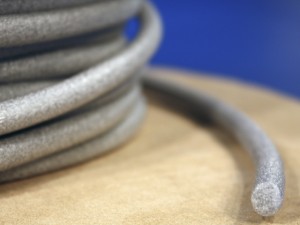Keep Your Heat Up and Your Costs Down With Foam Thermal Insulation Products
With winter’s chill looming large for many people this time of the year, every snowflake is bittersweet, being seen as things of beauty as well as another cent owed on the next heating bill. The more effort your heating and cooling systems put forth to reach and maintain temperatures, the greater the cost of powering them. While the efficiency of one’s heating and cooling system may be part of the reason for an elevated bill, home insulation is one aspect of temperature conditioning that often goes overlooked. Many materials used in home construction, such as wood, glass, brick, and concrete are poor thermal insulators and have very low R-Values, a measure of thermal resistance.
To ensure that your structure reaches and maintains the temperature you want, thermal insulation is used to keep homes and buildings more comfortable and more efficient. Closed-cell foam materials are frequently used in this kind of insulation, and polystyrene (EPS) and polyethylene are two of the most used types.
One of the first components of thermal insulation that must be understood before adding to or modifying a structure is R-Value. This is a material’s degree of thermal resistance, which can also be thought of as insulating capacity. To get these values, temperature change through a material is measured. The greater the R-Value a material earns, the better its performance as an insulator. Material thickness increases R-Value, because greater mass makes the movement of temperature through the material more difficult.
The Foam Factory’s polyethylene and polystyrene sheet foam both tout strong R-Values. Foam insulation can be used throughout the house to help regulate temperature, including within walls and ceilings, as well as around pipes, ducts, and other systems.
The place where foam insulation is most often used is in walls and ceilings; attics in particular. When untreated, these areas bleed conditioned air from the home, forcing your heating and cooling systems to work harder to make up for the loss. The addition of thermal insulation materials to a home can also help improve sound quality. The installation of foam materials provides extra mass and barriers that noise must travel through, so it is also adding sound deadening insulation to the home.
There are many benefits to using expanded polystyrene as your home insulation, but the greatest may be that you can count on it for the life of your home. EPS is composed of structural material and normal air, as opposed to gasses, and does not lose its insulating value over time. Extruded polystyrene (XPS) however, utilizes gases in its formulation that slowly dissipate as the material ages, lowering the material’s insulating ability. Spray foam is another popular home insulation method but also fails to measure up in some areas. The biggest advantage of EPS over spray foam is the ease with which it can be installed for do-it-yourself projects. Installing EPS doesn’t require special safety suits, there isn’t worry over a leak or spill causing a mess, and it can be installed at any temperature. Applying spray foam in cooler temperatures can affect the curing process, ultimately reducing its insulating performance.
Another effective foam thermal insulation material is polyethylene. Often used as pipe wraps, polyethylene can help minimize temperature loss from treated water. Keeping water at its treated temperature equates to energy savings, as conditioning systems have to work less to maintain those temperatures and consume less energy. Polyethylene is available in multiple densities, from 1.7LB to 9LB, and can be cut in sheets ¼ of an inch thin. An Anti-Static formulation is also available in polyethylene sheets, and like polystyrene, polyethylene can be ordered in custom-cut sizes as well.
Commonly recognized as swimming pool noodles, polyethylene cylinders are also made in very small diameters, some down to ¼ of an inch. These sizes are most often used as backer rod material in masonry, but these thin cylinders serve a similar purpose in home construction, while also assisting with thermal insulation. In the construction of log homes, these sections of foam are forced between logs to fill gaps and block moisture, air, and insects from entering the house. The area between the two meeting logs is then caulked over, a process called chinking. This creates a seal, as well as permitting the house to settle and flex with changes in weather, as the polyethylene only allows a two-point bond. If no foam filler was used, the putty or caulk would adhere to the area between the logs and cause damage as it pulls away from the three-point bond when the wood expands and contracts.
When it all adds up, thermal insulation is one of the smartest investments you can make. If the right materials are used and installed properly, insulation is a one-time cost that pays for itself in energy savings and makes your home a more comfortable place to be. Foam materials provide that, allowing you to get a return on your investment quickly and enjoy your savings sooner.
Tags: Backer Rod, Insulation, Polystyrene
Posted in Other Products




Leave a Reply